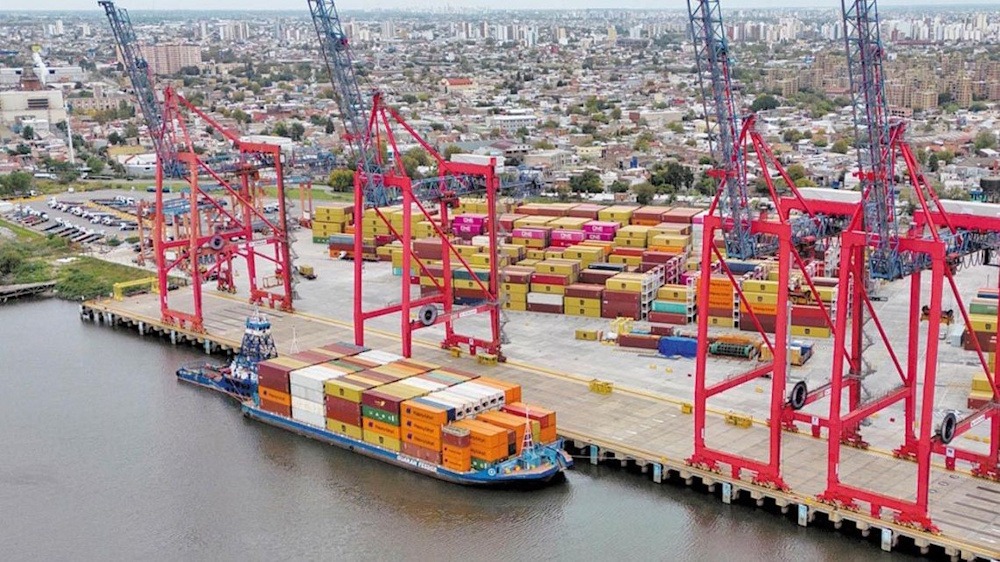President Javier Milei’s temporary suspension of crop export tariffs last week, aimed at bolstering the nation’s finances, triggered an unprecedented surge in bookings. Commodity traders and farmers are currently contending with the repercussions. Milei’s strategy to enhance the supply of dollars in the foreign-exchange market swiftly garnered approximately US$7 billion in planned shipments, as exporters such as commodity trading houses Bunge Global SA, Cargill Inc, and Louis Dreyfus Co capitalized on the opportunity. Within 48 hours, the tariffs were reinstated, encompassing levies of approximately 25 percent on soy shipments and roughly 10 percent on corn and wheat. Although it is not unprecedented for fluctuations in government policy to incite a rush to export, the magnitude of the trading frenzy observed last week has left the agricultural sector of the country in a state of disarray. Nearly 20 million metric tons of oilseed and grain shipments were recorded, representing the highest volume in Agriculture Department data since 2011.
“I’ve never seen anything like it,” remarked Gustavo Passerini, Argentina’s trading center along the Paraná River. The only other instance in recent history that could be likened to this was when the country increased export tariffs in 2007, he stated. The surge in exports is eliciting attention beyond Argentina’s borders. US soy farmers find themselves excluded from the Chinese market, creating advantageous conditions for Argentine and Brazilian producers. Attention is now focused on the impending discussions between Donald Trump and Xi Jinping regarding this matter. However, farmers across the Argentine Pampas express frustration, harboring suspicions that traders may seize the majority of the price increases. “We’re hot under the collar because the government let the exporters benefit,” stated Santiago Fernandez de Maussion. “Currently, they possess the advantage in price negotiations, whereas I find myself grappling to achieve profitability.” Traders might find themselves in a challenging position. They have committed to 12.4 million tons of soy cargoes between now and March, prior to the arrival of the next harvest.
As the year progresses, we observe a reduction in inventories on the Pampas, which consequently enhances the bargaining power of growers. “The special programme triggered a whirlwind of crop sales,” stated CIARA-CEC in a post. “Trading companies persist in their operations within grain markets to fulfill all export contracts as is customary.” As of September 24, producers had marketed over 35 million tons, representing 62 percent of the total projected supplies of 57 million. “The farmers with beans left are the ones with the financial clout to hold them back in silos, so they have leverage,” stated Javier Preciado Patiño. They are currently making progress in the ongoing competition. Current offers for soybeans stand at approximately US$350 per ton, a notable increase from under US$300 prior to the implementation of tariff relief, as per reports. According to market analyst Lorena D’Angelo, this indicates that traders are transferring approximately 60 percent of the advantage as they rush to fulfill their obligations. Milei himself highlighted the increased prices in a September 30 television interview as evidence that farmers are benefiting from the windfall.
Nevertheless, cultivators – a stronghold of backing for the libertarian president – continue to express dissatisfaction regarding the perceived favoritism shown towards traders. The unfulfilled promise to unleash agriculture by Milei compounds the existing frustration. Farming stands as a cornerstone of Argentina’s economy; however, production has faced significant challenges over the past two decades due to government interventions, resulting in a growing disparity with neighbouring Brazil. “We take the most risk, and yet we shoulder the burden again,” stated Augusto Mc Carthy. “The exporters ought not to retain any of what is justly ours.”

